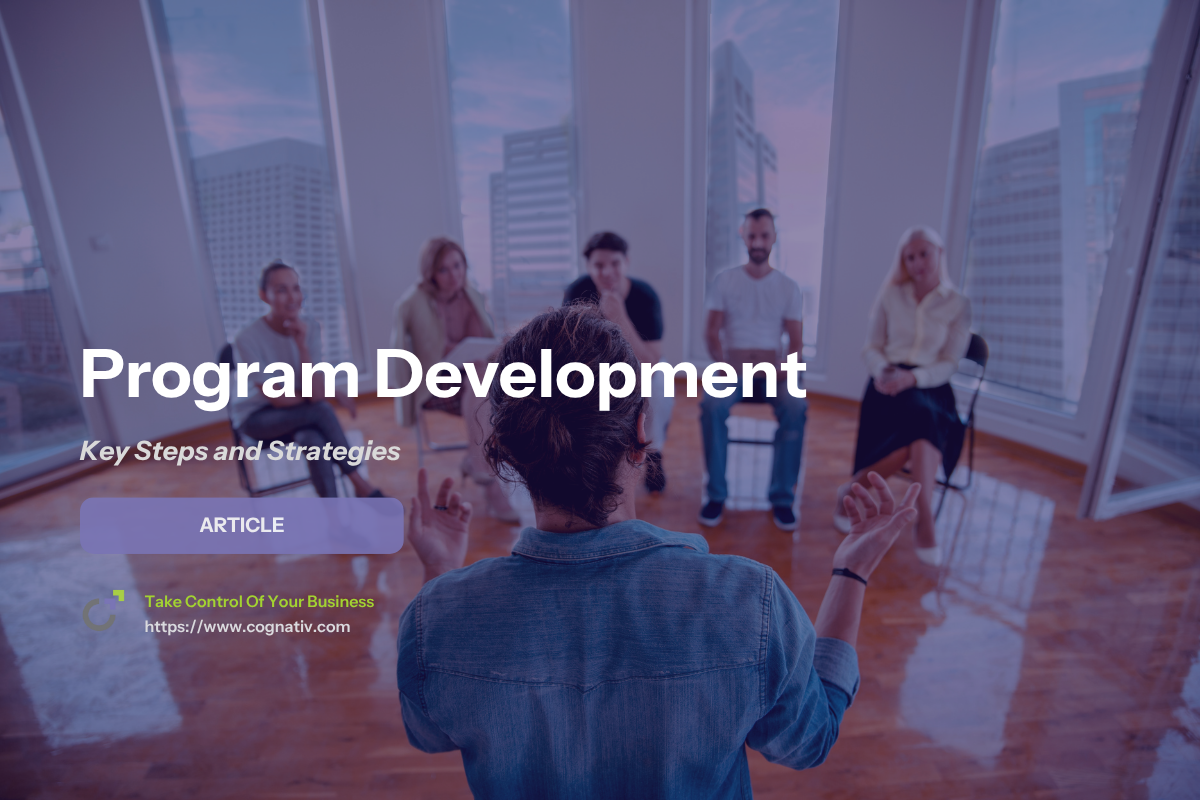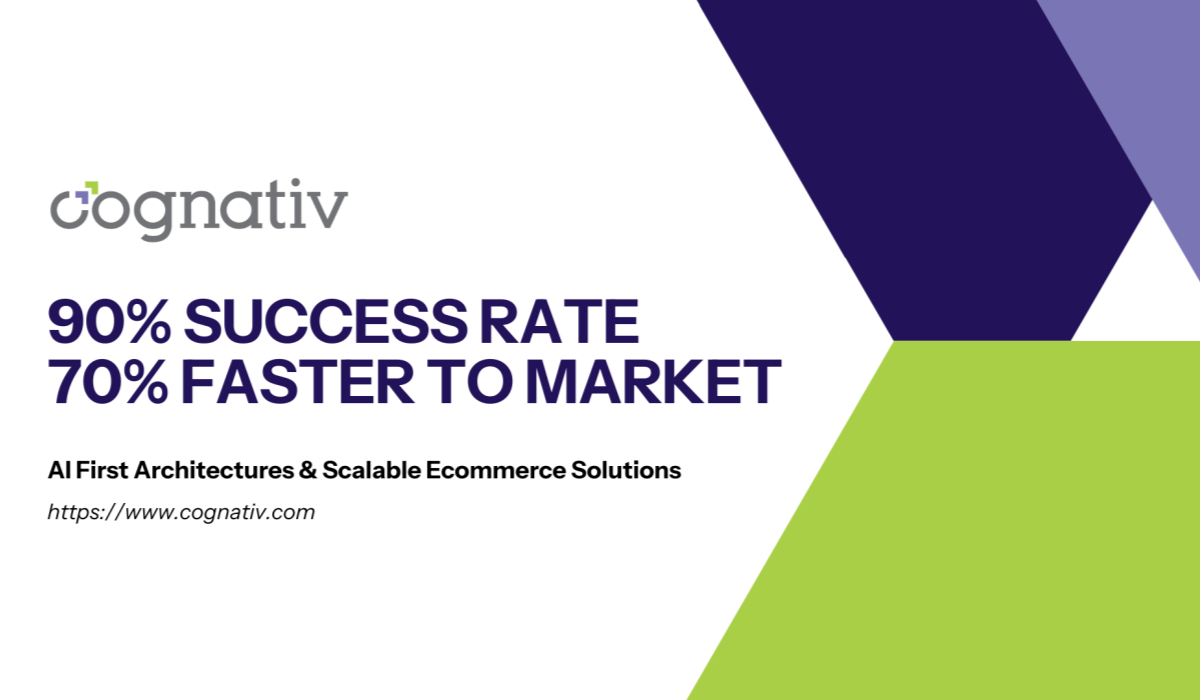Master Program Development: Steps Benefits and Strategy
Effective program development transforms ideas into actionable plans. This involves key steps: identifying needs, designing the structure, implementing the program, and evaluating outcomes. This article covers these steps and strategies to ensure successful Development of Program.
Key Takeaways
-
Program development is a structured process that includes identifying needs, designing, implementing, and evaluating initiatives to meet organizational goals.
-
Effective program development enhances employee engagement and retention, leading to improved organizational performance and business success.
-
Engaging stakeholders and utilizing diverse perspectives throughout the program development process fosters innovation and ensures programs are relevant and effective.
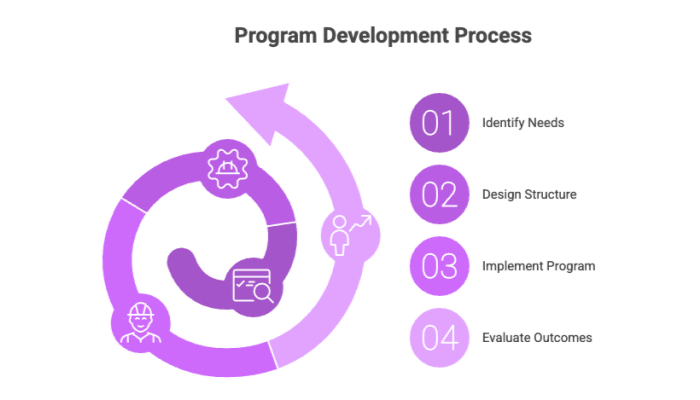

Understanding Program Development
Program development is a systematic process involving the design, implementation, and evaluation of initiatives aimed at addressing specific needs or achieving desired outcomes. This process is crucial for organizations to effectively manage their projects and ensure they meet their goals. Setting clear objectives and goals in program development crafts well-defined, achievable plans that guide the whole process.
Well-designed programs:
-
Enhance the chances of success.
-
Promote accountability.
-
Provide a structured approach that ensures every step is taken with a clear purpose in mind.
-
Integrate varied viewpoints during the program development process, promoting innovation and creativity, leading to more effective solutions.
Utilizing logic models as a framework can further enhance the planning, implementation, and evaluation of programs. These models help in visualizing the connections between resources, activities, outputs, and outcomes, making it easier to identify areas for improvement and measure the success of the program.
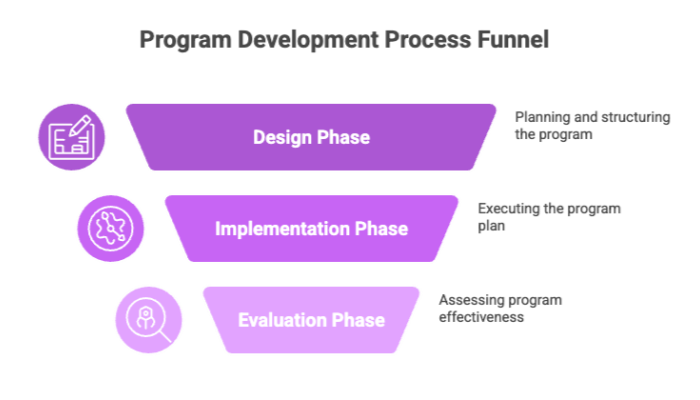

Key Steps in the Program Development Process
The journey of program development can be broken down into four key steps:
-
Identifying needs and objectives
-
Designing the program structure
-
Implementing the program
-
Monitoring and evaluating progress
Each of these steps plays a vital role in ensuring that the program is well-planned, effectively executed, and continuously improved based on feedback and performance metrics to explain the overall method process.
Identifying Needs and Objectives
Identifying and analyzing needs, challenges, and opportunities within a target population or community is the first essential step in the program development process. Conducting a needs assessment helps in pinpointing the gaps between the current situation and desired outcomes. This step lays the foundation for the entire program by defining what needs to be addressed and why.
Setting goals and objectives that are SMART (specific, measurable, achievable, relevant, time-bound) is crucial in this phase. These characteristics ensure that the objectives are clear and attainable, providing a roadmap for the program’s success. Involving key stakeholders in this process is equally important as it promotes ownership, collaboration, and sustainability of the program.
Understanding identified needs and goal setting appropriate objectives allows organizations to understand develop tailored programs, increasing the likelihood of achieving desired outcomes.
Designing the Program Structure
The program design phase involves:
-
Comprehensive planning of the structure, activities, resources, and timeline.
-
Setting the foundation for how the program will operate.
-
Identifying the main routine as the first step, which lays the groundwork for the entire structure.
Key components of the program specification include data used, processing methods, output formats, and user interfaces. Additionally, determining the delivery methods and program materials is crucial for the overall structure. Resource requirements, such as the type of skills developed and the logistics of learning, are also influenced by the specificity of the plan.
A well-define project scope is essential to prevent misunderstandings and ensure that all stakeholders have aligned expectations. This clarity helps in managing resources efficiently and achieving the program’s objectives.
Implementing the Program
Implementing a program involves mobilizing the necessary human, financial, and material resources required for its execution. Effective resource mobilization ensures that the program has the capacity to carry out its planned activities successfully. Involving stakeholders throughout the implementation phase enhances collaboration, leading to better outcomes and sustainability of the program.
Adhering to the program model is crucial for ensuring that the implementation aligns with the original objectives and enhances program effectiveness. This adherence helps in maintaining the integrity of the program and achieving the desired results.
Following a structured implementation process ensures programs are executed efficiently and effectively, leading to successful outcomes.
Monitoring and Evaluating Progress
Monitoring and evaluation are essential components of the program development process. They involve tracking progress, identifying areas for improvement, and measuring outcomes. Evaluation focuses on assessing the effectiveness, efficiency, and sustainability of the program at different stages during implementation and after completion.
Grading the quality of a course or program is vital for evaluating its effectiveness and refining professional expertise. The importance of regularly reviewing and updating program components in response to participant feedback is essential for maintaining program effectiveness.
Continuous monitoring and evaluation enable organizations to make data-driven decision making, enhancing programs and achieving objectives.
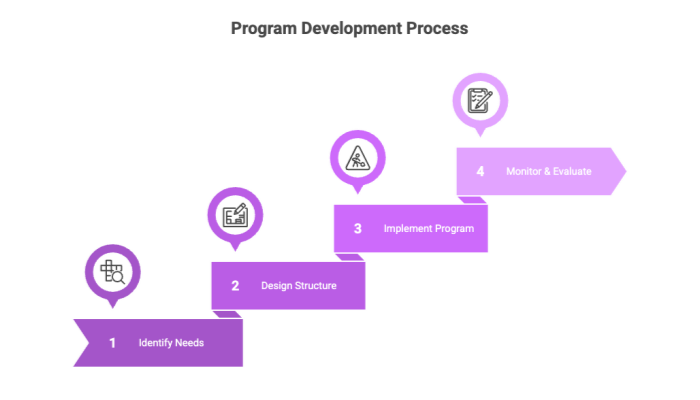

Types of Development Programs
Development programs come in various forms, each tailored to meet specific goals and objectives that may vary depending on the needs of the organizations. Many organizations are developing these development plans to align with their unique needs, enhancing overall business success and creating development opportunities.
The primary types of development programs include employee development programs, software development programs, and educational development programs.
Employee Development Programs
Employee development programs are structured initiatives aimed at enhancing new skills and competencies to bridge gaps between current capabilities and future professional requirements. These programs typically support operational goals by enhancing workforce skills. Skill set and performance development trainings aim to improve:
-
Interpersonal abilities
-
Time management
-
Organization
-
Creativity
-
Critical thinking skills.
Professional development programs can cover various areas, focusing on growing professional skills and enhancing productivity. Types of employee development programs include executive coaching and continuing education, which help advance careers. Organizations often financially support employees pursuing professional education, such as compensation for courses or certifications.
Participants of continuing education programs typically earn degrees, certifications, and credentials that enhance their professional opportunities. Coaching programs like executive coaching are crucial in facilitating the growth of mid-level managers for advancement to higher level management.
Software Development Programs
Software development programs involve translating an algorithm into a specific programming language, which is the key process of coding. Structured programming improves the clarity of code. It achieves this by implementing well-defined control structures. Common types of errors encountered in program development include syntax errors and logical errors, which are identified and eliminated through debugging.
After testing a software project, documentation is created that includes:
-
Structure charts
-
Pseudocodes
-
Flowcharts
-
Manuals
The final phase of program deployment involves installing the program and monitoring it until user approval is obtained. Maintenance of software programs includes fixing errors and providing regular updates.
By following these structured processes, software development programs ensure that the final product is robust, reliable, and meets user requirements.
Educational Development Programs
Educational programs development programs are designed to enhance educational outcomes through targeted training and support for educators. These programs help employees gain specialized skills through executive coaching, mentoring, and custom training.
Investing in educational development programs ensures educators are well-equipped to provide high-quality learning experiences, leading to better educational outcomes.
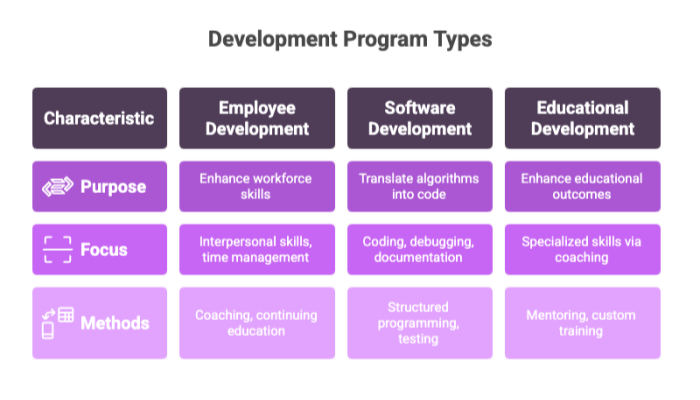

Benefits of Effective Program Development
Organizations that employ effective development programs see improved employee retention and attraction, demonstrating a commitment to professional employee growth. Effective professional development is linked to higher employee retention rates, with organizations reporting a 58% increase when investing in such programs.
Well-implemented development programs lead to a workforce with enhanced skills, significantly boosting employee engagement and productivity. These initiatives foster a culture of continuous learning, leading to enhanced collaboration and a positive workplace environment.
Examples from successful companies like Southwest Airlines and Amazon showcase how effective program development can lead to high customer satisfaction and business success through engaged and dedicated staff.
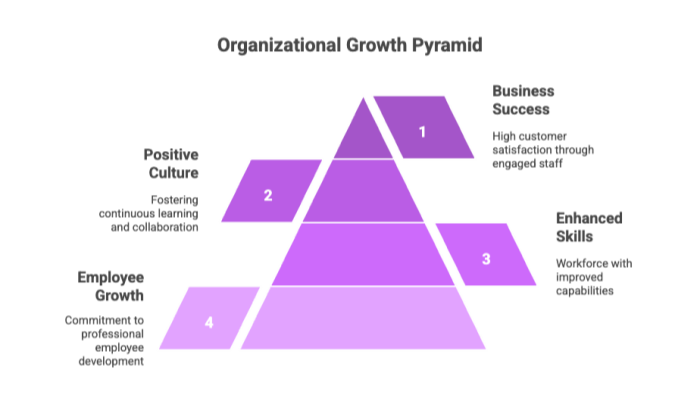

Strategies for Successful Program Development
Establishing a clear vision and mission for the program is crucial for guiding development efforts. Creating specific goals, choosing the right experts, and measuring results are essential steps in effective program development.
Integrating diverse learning methods, including digital platforms and mentorship, is critical to engaging participants in development programs and fostering strong communities to learn.
Engaging Stakeholders
Involving stakeholders throughout the development process can lead to:
-
Better collaboration and sustainability.
-
Enhanced program relevance and effectiveness through incorporating feedback.
-
Clear channels of communication that keep development teams informed and engaged throughout the project lifecycle.
Engaging stakeholders throughout the project can enhance the quality of the end product by incorporating diverse insights. This involvement creates a sense of ownership and commitment among stakeholders, leading to better outcomes.
Utilizing Diverse Perspectives
Diverse perspectives enhance creativity and innovation, allowing teams to address complex challenges more effectively. Microsoft’s diversity and inclusion efforts are integral to its organizational development strategy, leading to enhanced creativity and innovation across teams. Incorporating diverse perspectives into program development is essential to meet the varied needs and expectations of stakeholders.
Utilizing diverse perspectives helps organizations to better adapt to change and develop comprehensive solutions to multifaceted problems. Actively seeking and integrating different viewpoints enables organizations to create more robust and adaptable programs, better equipped to handle future challenges and generate new ideas.
Continuous Learning and Adaptation
Continuous adaptation allows programs to stay relevant and responsive to changing needs. Leaders should set goals and identify improvement opportunities to support their growth journey. Continuous feedback is vital for leadership development, enabling growth and addressing employee needs.
Technology facilitates ongoing feedback, enhancing communication and adaptability. IBM’s commitment to continuous learning and its ability to adapt to technological changes has positioned it well to enhance employee engagement and retention.
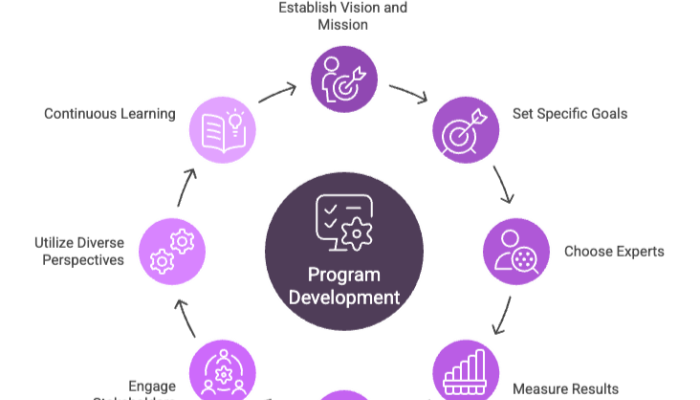

Overcoming Common Challenges in Program Development
Challenges in program development grow considerably with more employees involved. Finding a quality mentor with a successful track record in the specific development area required can be a significant challenge. Often, general development programs provide generalist mentors instead of specialists, which can limit the program’s effectiveness.
Key practices during the development process include:
-
Prioritizing quality assurance to identify and resolve defects early.
-
Regularly updating project management tools to track progress and adapt to changes in project requirements.
-
Maintaining a test environment that replicates real-world conditions to accurately gauge user interactions with the application.
By addressing these common challenges and potential risks, organizations can ensure a smoother program development process and achieve more successful outcomes.


Real-World Examples of Successful Program Development
Growthspace measures the business impact of development programs using a numerical questionnaire, with responses from both employees and their managers. This approach allows for a clear assessment of the program’s effectiveness and areas for improvement.
Cognativ has been helping organizations develop leaders since 2024. Our work provides a valuable example of how targeted leadership development programs can lead to significant improvements in organizational performance and employee satisfaction, fostering a strong team culture.
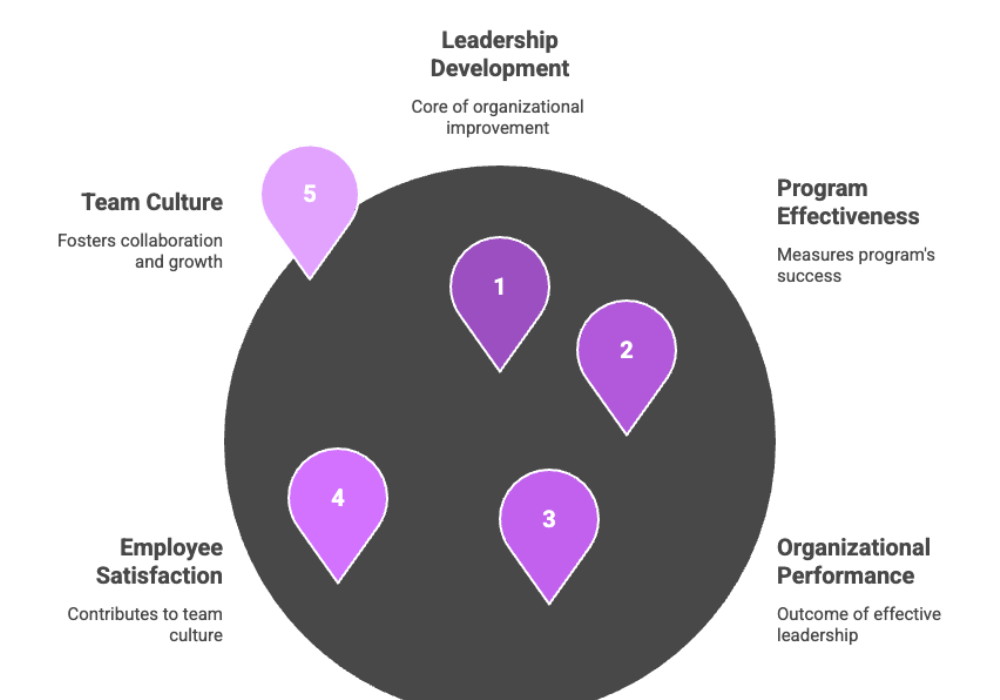

Summary
Mastering the development of programs is a multifaceted process that requires careful planning, implementation, and continuous evaluation. By understanding and applying the key steps and strategies outlined in this guide, organizations can create effective programs that meet their specific needs and objectives.
Effective program development not only enhances organizational performance but also fosters a culture of continuous learning and innovation. By engaging stakeholders, utilizing diverse perspectives, and embracing continuous learning and adaptation, organizations can overcome common challenges and achieve lasting success. Now is the time to put these insights into action and transform your development programs into powerful tools for growth and success.

Frequently Asked Questions
Effective development of program is a critical process that enables organizations to identify specific needs, set clear objectives, and implement strategic initiatives that contribute to overall success. By leveraging diverse perspectives and incorporating continuous feedback through performance reviews, organizations can design development programs that not only address current challenges but also foster employee growth and satisfaction.
This approach ensures that new employees and other professionals alike gain the knowledge and skills necessary to thrive, ultimately enhancing the quality and impact of the final product.
What are the key steps in the program development process?
The key steps in the program development process are identifying needs and objectives, designing the program structure, implementing the program, and monitoring and evaluating progress. Following these steps is essential for ensuring effective and successful program outcomes.
Why is stakeholder engagement important in program development?
Stakeholder engagement is crucial in program development as it fosters collaboration, enhances program relevance, and improves overall effectiveness. By involving stakeholders, programs are more likely to be sustainable and aligned with the needs of those they serve.
How do diverse perspectives benefit program development?
Diverse perspectives enrich program development by fostering creativity and innovation, enabling teams to tackle complex challenges and create more effective solutions. This inclusivity ultimately leads to more comprehensive and successful outcomes.
What are some common challenges in program development?
Common challenges in program development include scaling team size, securing quality mentorship, maintaining quality assurance, continuously updating project management tools, and accurately replicating real-world conditions for testing.
What are the benefits of effective program development?
Effective program development significantly improves employee retention and attraction, boosts skills and productivity, fosters a culture of continuous learning, and enhances overall business success. Therefore, investing in effective program development is crucial for organizational growth.

